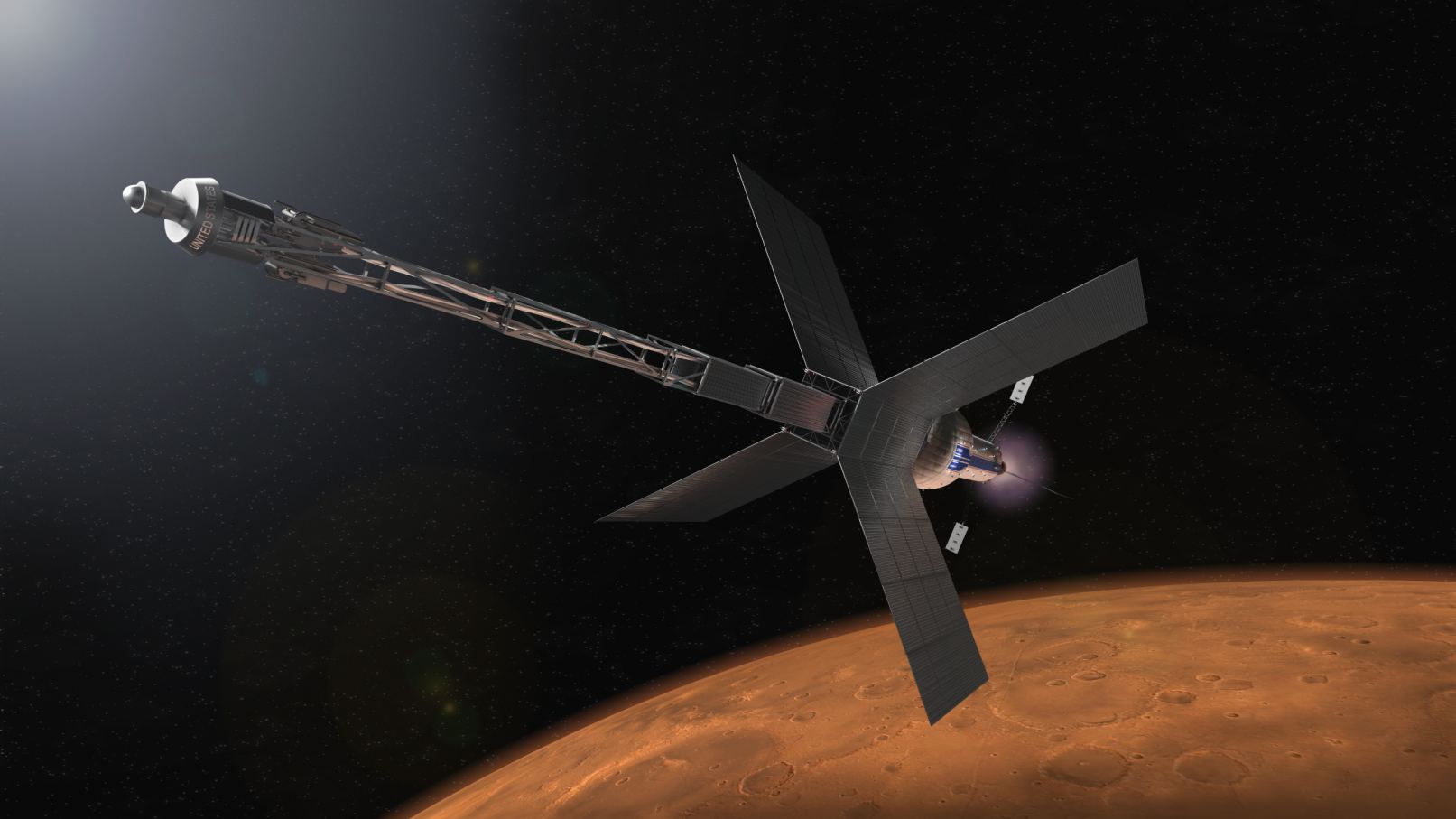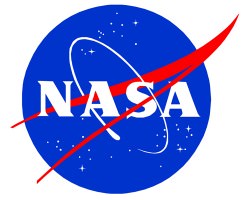As a new President of the United States is elected, the NASA administrator role is usually reviewed. With the election of Trump, a new administrator has been chosen, Jared Isaacman. He is a billionaire entrepreneur, an experienced jet pilot and has himself completed to private flights to space. He was also the first to complete a spacewalk during the Polaris Dawn mission. Isaacman replaces the outgoing administrator Bill Nelson, a former space shuttle astronaut and senator.
Continue reading “Jared Isaacman is Trump’s Choice for NASA Administrator”White House Encourages NASA to Work on Space-Based Nuclear Power and Propulsion Systems
In what’s likely to be one of the last space policy initiatives of his administration, President Donald Trump has issued a directive that lays out a roadmap for nuclear power applications beyond Earth.
Space Policy Directive 6, released on December 16th, calls on NASA and other federal agencies to advance the development of in-space nuclear propulsion systems as well as a nuclear fission power system on the Moon.
“Space nuclear power and propulsion is a fundamentally enabling technology for American deep space missions to Mars and beyond,” Scott Pace, the executive secretary of the National Space Council, said in a White House news release. “The United States intends to remain the leader among spacefaring nations, applying nuclear power technology safely, securely and sustainably in space.”
Continue reading “White House Encourages NASA to Work on Space-Based Nuclear Power and Propulsion Systems”Space Force is Recruiting, Here’s their New Video
“Maybe your purpose on this planet… isn’t on this planet!”
These spine-tingling words cap off the US Space Force’s (USSF) new recruitment video, which hit the airwaves earlier this week. After giving a rundown of what the USSF’s responsibilities are, the video culminates with that beautiful tagline, in which people are invited to find their place off-world!
While this video is pretty short and sweet, it represents a significant milestone in the development of the USSF as an independent branch of the US Armed Forces – a process that began in earnest just a few years ago.
Continue reading “Space Force is Recruiting, Here’s their New Video”VP Mike Pence Lays Out Administration’s Plan to go Back to the Moon
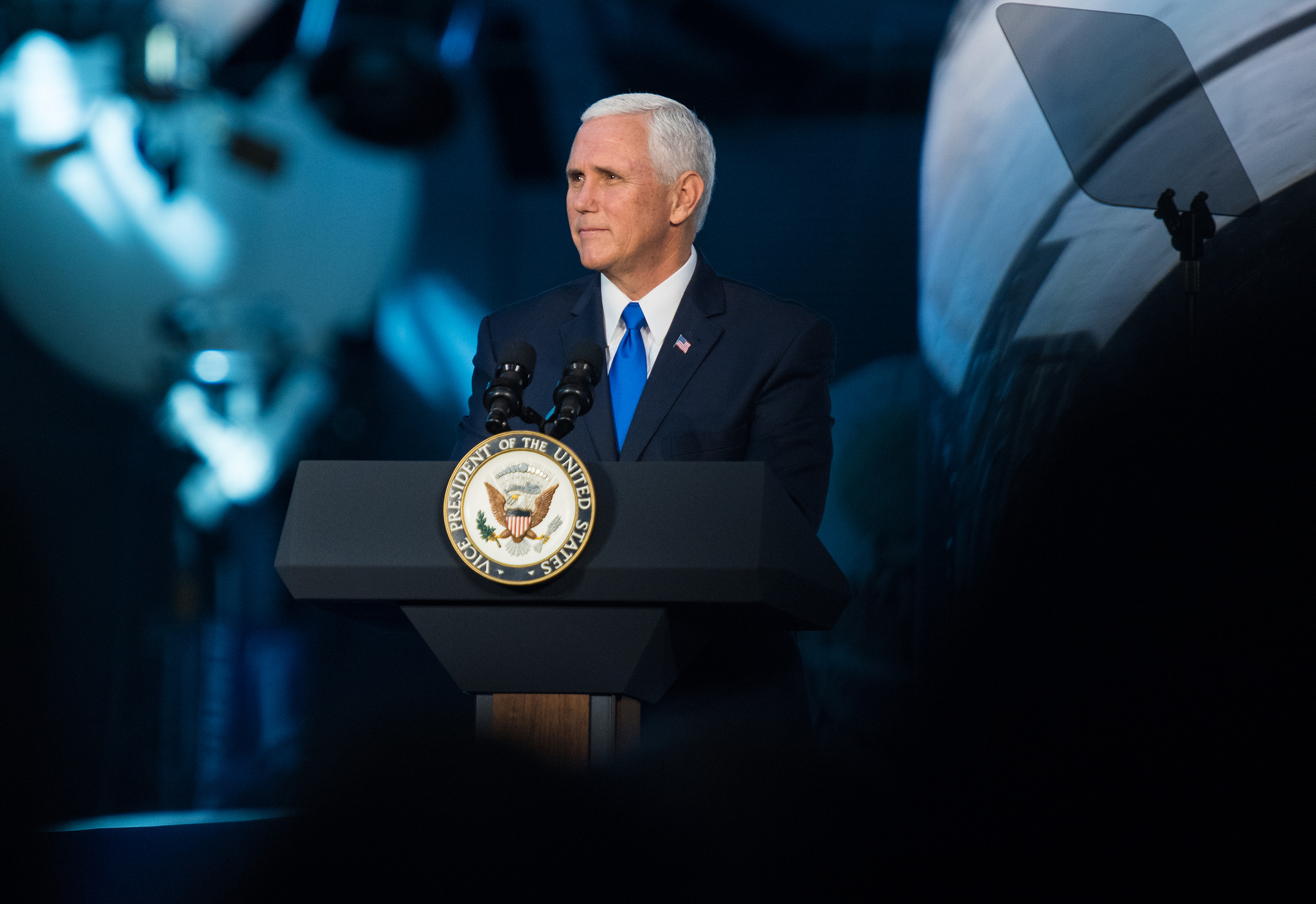
Looking to the future of space exploration, NASA’s priorities are sometimes subject to change. In 2004, the Bush administration released it’s “Vision for Space Exploration“, which called for the development of rockets that would return astronauts to the Moon. This policy was later replaced by the NASA Authorization Act of 2010, which outlined plans to send humans to an asteroid by 2025 and to Mars in the 2030s.
Earlier today, on Thursday, October 5th, Vice President Mike Pence and several members of the Trump administration announced that their priorities have shifted once again. Instead of proceeding with NASA’s proposed “Journey to Mars“, the administration has set its sights on once again mounting crewed missions to the Moon and establishing a permanent presence on the lunar surface.
The announcement came during the inaugural meeting of the National Space Council, the newly-reestablished executive group that will be guiding US space policy in the coming years. Originally established in 1989 by then-president George H.W. Bush (and disbanded in 1993 by the Clinton administration), this council served the same purpose as the National Aeronautics and Space Council – which oversaw space policy between 1958 and 1973.
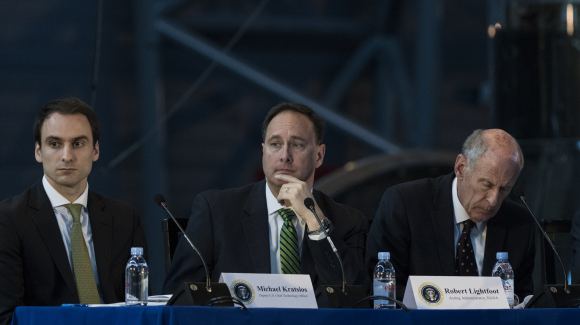
The meeting, titled “Leading the Next Frontier: An Event with the National Space Council“, took place at the Smithsonian National Air and Space Museum’s (NASM) Steven F. Udvar-Hazy Center in Chantilly, Virginia. The meeting was chaired by Vice President Mike Pence with the participation of NASA Administrator Robert Lightfoot, and was attended by Trump Administration cabinet members, senior officials, and aerospace industry leaders.
During the course of the meeting, which was live-streamed, Vice President Mike Pence laid out the administration’s plans for returning astronauts to the Moon. Emphasizing the need to restore NASA and America’s leadership in space, Pence compared the current situation to the early years of the Space Race and the crowing achievement that was the Apollo 11 mission. As he said:
“It is altogether fitting that we chose this week for the first meeting of the National Space Council. Yesterday marked the 60th anniversary of Sputnik, that 184-pound satellite that changed the course of history. On that day, six decades ago yesterday, the race for space began and the then-Soviet Union took an early lead. But the sight of that light blinking across that October sky spurred America to action. We refused to accept a future in space written by the enemies of freedom, and so the United States of America vowed to claim our rightful place as the undisputed leader in the exploration of the heavens. And twelve years later, with “one giant leap for mankind”, America led in space.
Moving to the present, Pence indicated that the reestablishment of he National Space Council would put an end to the ways in which space exploration has stalled in recent decades. He also indicated how a return to the Moon – a goal which diminished in important in the post-Apollo era – would recapture the spirit of the past and reinvigorate modern space exploration.
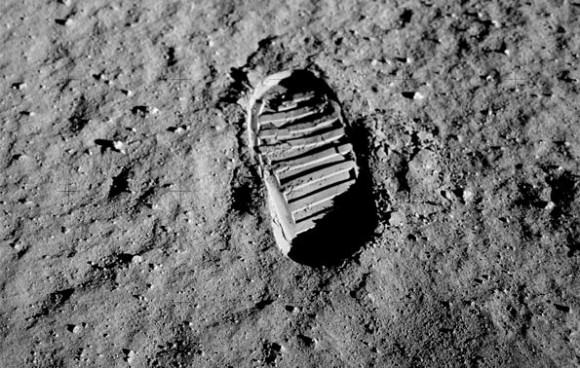
As he expressed during the course of the meeting, the way space exploration has stalled is in part due to the way in which the Moon (as a destination) has diminished in importance:
“Our struggle to define the direction and purpose of America’s space program dates back decades to the post-Apollo period. We had just won the race to the Moon and suddenly the question became, ‘What should we do? Where should we go next?’ In the debate that followed, sending Americans to the Moon was treated as a triumph to be remembered, but not repeated. Every passing year that the Moon remained squarely in the rear-view mirror further eroded our ability to return to the lunar domain and made it more likely that we would forget why we ever wanted to go in the first place.”
A renewed mission to the Moon, claimed Pence, will put an end to decades in which not a single NASA astronaut has ventured beyond Low Earth Orbit. He further indicated how after the retirement of the Space Shuttle Program, the US has been dependent on Russia to ferry astronauts to the International Space Station. He also voiced criticism for the Obama administration, claiming that it chose “capitulation” when it came to the space race.
While this new policy technically represents a break from the policy of the Obama administration, and a return to the policy of the Bush administration, Pence emphasized that returning to the Moon would be a stepping stone towards an eventual crewed mission to the Red Planet. This announcement also put an end to months of ambiguity regarding the Trump administration’s space policy.
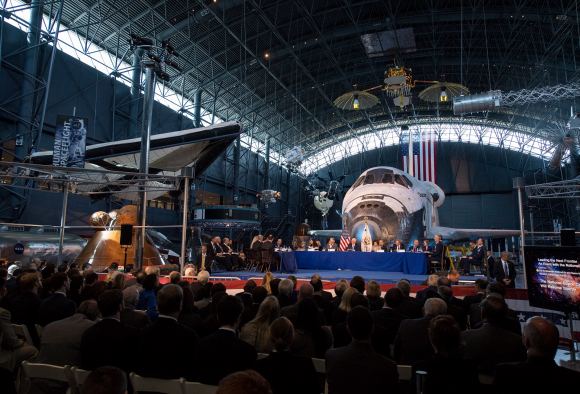
In the past, VP Pence has spoken about the need to return to the Moon and puts boots on Mars, but nothing definitive was said. This ambiguity, it is worth noting, has also been a source of anxiety for those at NASA, who were unsure about the future budget environment. And while this meeting did indicate that the Trump administration has a policy, many aspects of it were already in place before the administration took office.
After the meeting concluded, acting NASA Administrator Robert Lightfoot spoke of the results in a NASA press statement. In reference to the direction VP Pence had indicated for the agency, he said the following:
“Specifically, NASA has been directed to develop a plan for an innovative and sustainable program of exploration with commercial and international partners to enable human expansion across the solar system, returning humans to the Moon for long-term exploration and utilization, followed by human missions to Mars and other destinations.”
Much of the details discussed at the meeting were already established as early as last September. It was at this time that the NASA Transition Authorization Act of 2016, a provisional measure that guaranteed short-term stability for the agency by allocating $19.5 billion in funding for NASA for fiscal year 2017. Intrinsic to the Act was the cancellation for the NASA’s Asteroid Robotic Redirect Missions (ARRM) in favor of a more cost-effective alternative.
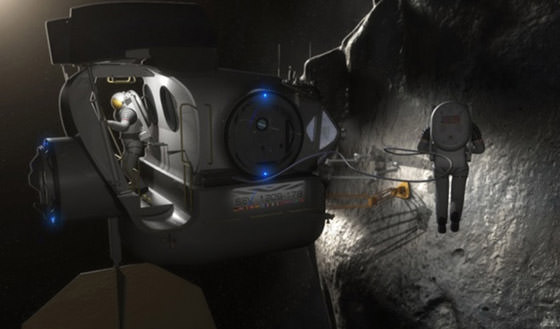
As Lightfoot indicated, this would still be the case under the current administration’s plan:
“The recommendation to the president would modify the existing National Space Policy to provide focus and direction to some of NASA’s current activities and plans, and remove a previous guideline that NASA should undertake a human mission to an asteroid as the next human spaceflight milestone beyond low-Earth orbit.”
Lighfoot also reiterated what Pence said during the meeting, how renewed missions to the Moon would ultimately assist NASA’s efforts to mount crewed missions to Mars. These included the importance of cis-lunar space to the exploration of both the Moon and the Mars, as well as its use as a proving ground for future mission to Mars and beyond in the Solar System.
“Based on a number of conversations I’ve had with the council,” he said, “we have highlighted a number of initiatives underway in this important area, including a study of an orbital gateway or outpost that could support a sustained cadence of robotic and human missions, as well as ensuing human missions to the lunar and Mars surfaces, and other destinations.”
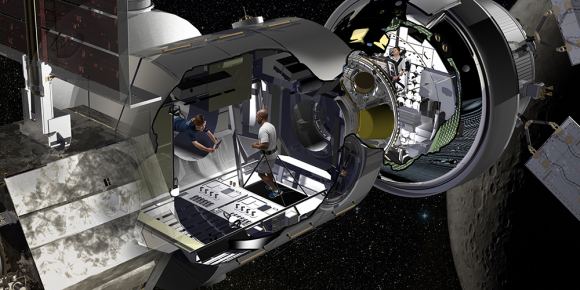
While this latest announcement does confirm what many have suspected for some time – that the Trump administration would prioritize lunar exploration – much ambiguity remains. While Pence emphasized that the re-establishment of the NSC was intrinsic to restoring American leadership in space, very little appears to have changed since the NASA Transition Authorization Act of 2016.
What’s more, despite Pence’s claims of “capitulation” on behalf of the Obama administration, much of the current administration’s policy represents a continuation of the NASA Authorization Act of 2010. These include the use of the Space Launch System (SLS), the Orion spacecraft, and the restoration of domestic launch capability. In short, much of the Trump administration’s plans to restore American leadership in space are piggybacking on the accomplishments of the Obama administration.
Beyond that, the creation of the Deep Space Gateway appears unaffected, since its existence is central to both renewed mission to the Moon and for crewed missions to Mars. And the long-term plan for the exploration of Mars appear to still be intact. So in many ways, this latest announcement is not much in the way of news, but also good news.
When it comes to organizations like NASA and space exploration in general, continuity is not only preferable, but necessary. And in the meantime, be sure to check out the live coverage of the event:
Could NASA Be Muzzled Under Trump Administration?
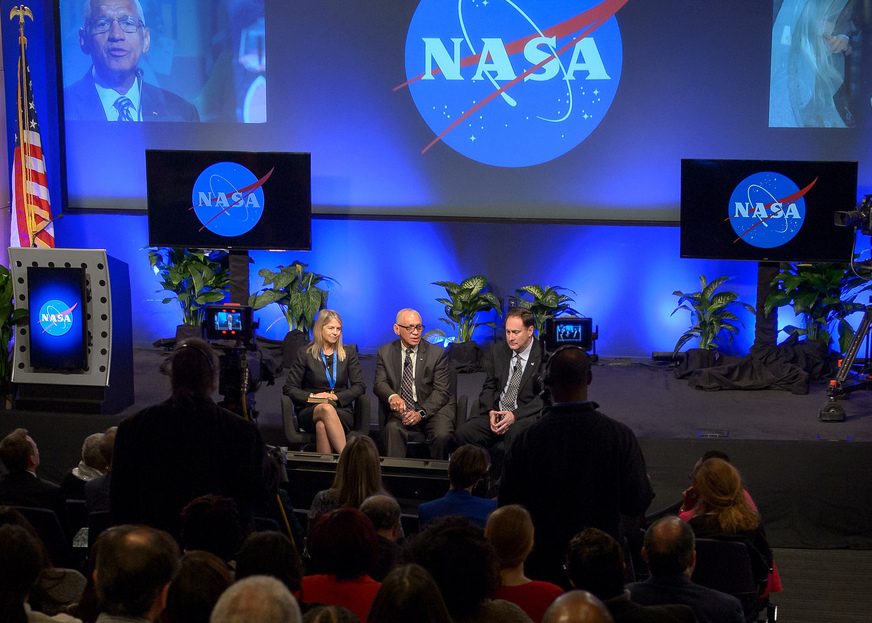
The Trump Administration appears to be trying to change how government agencies disseminate information to the public. According to reports from multiple outlets, several agencies are being told to discontinue or suppress communications with the public, the media and even Congress.
Additionally, Reuters is reporting that the Trump administration has instructed the Environmental Protection Agency (EPA) to remove information about climate change from its website. (An update today from The Hill quotes Doug Ericksen, EPA transition team spokesman as they are only “taking a look at everything on there.”)
All this has anyone interested in NASA’s activities wondering if the US space agency could be ordered to stifle its very active social media presence, or to remove the extensive information it has available on several NASA-related sites on climate change.
Universe Today contacted several NASA sources to see if the space agency has received any orders similar to the other agencies. All indications appear that, for now, NASA has not received any such orders.
John Yembrick, who heads NASA Headquarters’ social media team told us via email that “Nothing has changed here at NASA. We are continuing to share information about our missions on social media.”
Another NASA employee who wished to remain anonymous said they would be surprised and horrified if the social media blocks would extend to NASA but it seems nothing is out of the question now.
This morning, several NASA social media accounts on Twitter and Facebook are posting as usual.
Jeff Foust from Space News reported on Twitter last night that he attended a talk by Michael Freilich, the director of NASA’s Earth science division at the meeting of the American Meteorological Society (AMS) going on this week in Seattle, Washington, and Freilich was asked if NASA been given direction like EPA and other agencies to not communicate with public. Foust tweeted that Freilich said they “have been given no direction to change” and that the transition to the new administration’s “landing team” of about eight people at NASA has gone smoothly.
It is important to remember that federal law has required NASA to widely disseminate information about its activities and scientific research in a timely way. National Aeronautics and Space Act of 1958 chartered NASA to “provide for the widest practicable and appropriate dissemination of information concerning its activities and the results thereof.”
The anonymous NASA source Universe Today talked to said the bigger issue for them right now is the hiring freeze that was imposed on all government agencies, and a possible grant freeze, such as the freezes posed on the EPA. Many scientists and graduate student work programs rely on grants for their salaries.
Other agencies that have been reportedly muzzled are the Interior Department (and the National Park Service), the Department of Agriculture (USDA), Department of Commerce, and Health and Human Services. All this is sparking concerns that the new president might be attempting to silence any dissenting views and control any information from federal agencies.
A news article out this morning says the USDA has now “disavowed the gag order”, calling it “flawed” and indicating that new guidance would be sent to its employees.
“This internal email was released without Departmental direction, and prior to Departmental guidance being issued,” the USDA said in a statement.
Is This ‘Normal?’
It’s important to point out that previous incoming presidential administrations have placed somewhat similar restrictions on limiting communications during the transition in order to have consistent messages come out across agencies.
But of course, there hasn’t been a new administration for eight years, and during those years the amount of information government agencies have made available on the internet has increased exponentially, and participation on social media has exploded. So, the moves to limit or silence the information disseminated by the agencies via online outlets is therefore unprecedented.
And many say this presidential transition feels completely different from any before.
National Public Radio (NPR) correspondent Nathan Rott interviewed Andrew Light, Senior Fellow in the Climate Program at the World Resources Institute in Washington, D.C., who formerly worked at the State Department. Light said the muzzling of agencies “seems to be aimed at a cluster of science-driven agencies that primarily work on the environment or climate change, and that seems unique or targeted in this case and unprecedented.”
You can listen to the NPR interview below:
The two highest people in leadership at NASA under the Obama Administration, Administrator Charles Bolden and Deputy Administrator Dava Newman, both stepped down on January 20 at the end of Obama’s term. NASA Associate Administrator Robert Lightfoot was named as acting administrator of NASA. Two White House appointees were named, Erik Noble as White House senior advisor and Greg Autry as White House liaison, part of an eight-member “landing team” assigned to NASA by Trump’s transition team.
Autry is an assistant professor of entrepreneurship at the University of Southern California. He has been “a proponent of commercial space activities,” according to Space News. Noble, who earned a Ph.D. in environmental studies from the University of Colorado, spent seven years at the NASA Goddard Institute of Space Studies in New York, working on weather and climate models.
Concern about agencies being silenced were heightened yesterday when a National Park Service (NPS) Twitter account from the Badlands National Park in South Dakota began posting information about climate change, which were later deleted. The NPS told media outlets that a former employee without approved access wrote the Tweets and that’s why they were deleted.
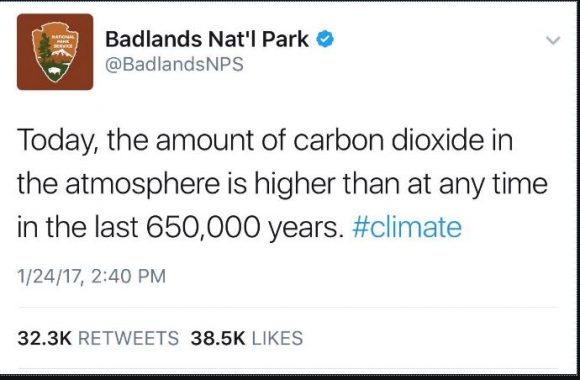
This came just days after the NPS was told to shut down its Twitter activity over two retweets about crowd sizes at presidential inaugurations. The Department of the Interior said those tweets were deemed inconsistent with the agency’s mission.
About 60 science and journalism organizations have requested a meeting with President Trump and Vice President Mike Pence to discuss access to government, but the newly elected team has not replied to the request.
The Sunlight Foundation, “a nonpartisan, nonprofit organization that uses technology, open data, policy analysis and journalism to make our government and politics more accountable and transparent to all,” has posted a list of government agencies that have reportedly been directed to not communicate with the public.
Trump Meeting Puts NASA Funding in Question
Since the election of Donald Trump, NASA has had its share of concerns about the future. Given the President-elect’s position and past statements on climate science, there has been speculation that his presidency will curtail funding to some of their research efforts, particularly those that are maintained by the Earth Science Directorate.
Things took another turn on Monday (Dec. 5th) as Trump met with former Vice President and environmental activist Al Gore to discuss his administration’s policy. This meeting was the latest in a series of gestures that suggest that the President-elect might be softening his stances on the environment. However, there is little reason to suspect that this meeting could mean any changes in policy.
The meeting was apparently arranged by the President-elect’s daughter, Ivanka Trump, to coincide with the former VP’s attendance of a conference in New York on Monday. Said conference was the 24 hour live broadcast titled “24 Hours of Reality”, an event being put on by the Climate Reality Project – a non-profit organization founded by Gore to educate the public on climate change and policy.
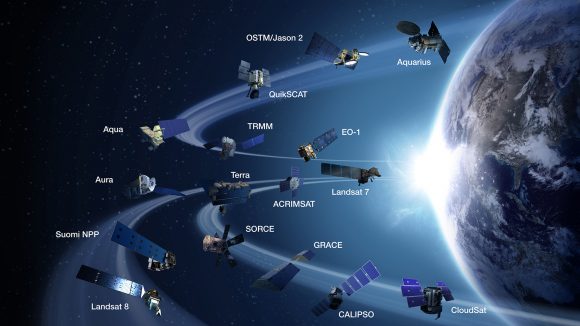
The meeting lasted 90 minutes, after which Gore spoke to reporters about the discussion he and the President-elect had. As he was quoted as saying by The Washington Post:
“I had a lengthy and very productive session with the president-elect. It was a sincere search for areas of common ground. I had a meeting beforehand with Ivanka Trump. The bulk of the time was with the president-elect, Donald Trump. I found it an extremely interesting conversation, and to be continued, and I’m just going to leave it at that.”
While this meeting has led to speculation that Trump’s administration might be softening its stance on environmental issues, many are unconvinced. Based on past statements – which include how Climate Change is a “hoax invented by the Chinese” – to his more recent picks for his cabinet, there are those who continue to express concern for the future of NASA programs that are centered on Earth sciences and the environment.
For instance, after weeks of remaining mute on the subject of NASA’s future, the Trump campaign announced that it had appointed Bob Walker – a former Pennsylvania Congressman and the chair of the House Science Committee from 1995 to 1997. A fierce conservative, Walker was recently quoted as saying that NASA should cease its climate research and focus solely on space exploration.

“My guess is that it would be difficult to stop all ongoing Nasa programs but future programs should definitely be placed with other agencies,” he said in an interview with the Guardian in late November. “I believe that climate research is necessary but it has been heavily politicized, which has undermined a lot of the work that researchers have been doing. Mr Trump’s decisions will be based upon solid science, not politicized science.”
From statements such as these, plus things said during the campaign that emphasized NASA’s important role in space exploration, the general consensus has been that a Trump administration will likely slash funding to NASA’s Earth Science Directorate while leaving long-term exploration programs unaffected. According to David Titley, who recently wrote an op-ed piece for The Conversation, this would be a terrible mistake.
Titley is a Professor of Meteorology at Pennsylvania State University and the founding director of their Center for Solutions to Weather and Climate Risk. In addition to being a Rear Admiral in the US Navy (retired), he was also the Chief Operating Officer of the National Oceanic and Atmospheric Administration from 2012–2013 and has been a Fellow of the American Meteorological Society since 2009.
As he noted in his piece, NASA’s Earth science and Earth observation efforts are vital, and the shared missions they have with organizations like the NOAA have numerous benefits. As he explained:
“There’s a reason why space is called ‘the ultimate high ground’ and our country spends billions of dollars each year on space-based assets to support our national intelligence community. In addition to national security, NASA missions contribute vital information to many other users, including emergency managers and the Federal Emergency Management Agency (FEMA), farmers, fishermen and the aviation industry.”
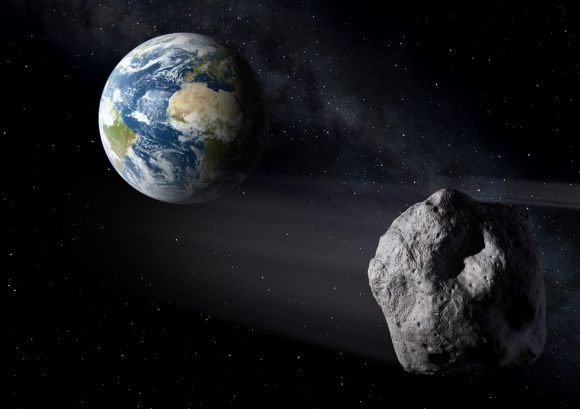
In the past, NASA’s Earth Science Directorate has contributed vital information on how rising temperatures could affect water tables and farmlands (such as the ongoing drought in California), and how changes in oceanic systems would affect fisheries. On top of that, FEMA has been working with NASA in recent years in order to develop a disaster-readiness program to address the fallout from a possible asteroid impact.
This has included three tabletop exercises where the two agencies worked through asteroid impact scenarios and simulated how information would be exchanged between NASA scientists an FEMA emergency managers. As Melissa Weihenstroer – a Presidential Management Fellow in FEMA’s Office of External Affairs and who works with NASA’s Planetary Defense Coordination Office – recently wrote about this inter-agency cooperation:
“Since FEMA doesn’t have direct experience with asteroids or their impacts, we’ve turned to some people who do: our partners at the National Aeronautics and Space Administration (NASA). While FEMA will be the agency in charge of the U.S. government efforts in preparing for and responding to any anticipated asteroid-related event here on Earth, NASA is responsible for finding, tracking, and characterizing potentially hazardous asteroids and comets while they are still in space.
Whenever a transition occurs between one presidential administration and the next, there is always some level of concern about the impact it will have on federal organization. However, when an administration is unclear about its policies, and has made statements to the effect that federal agencies should cease conducting certain types of research, NASA can be forgiven for getting a little nervous.
In the coming years, it will be interesting to see how the budget environment changes for Earth science research. One can only hope that a Trump administration will not see fit to make sweeping cuts without first considering the potential consequences.
Further Reading: The Conversation, The Washington Post


